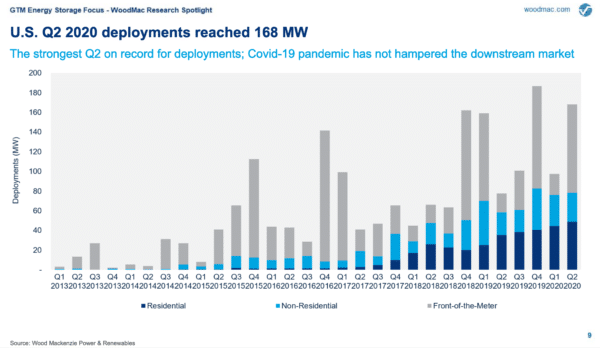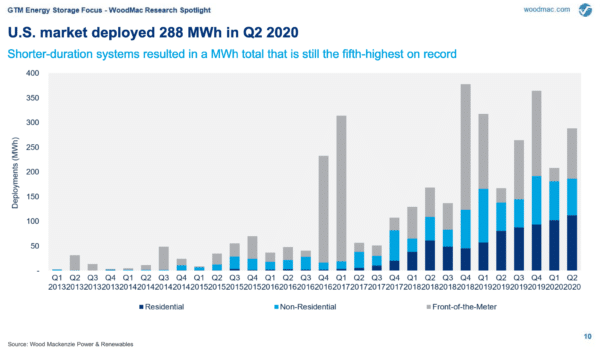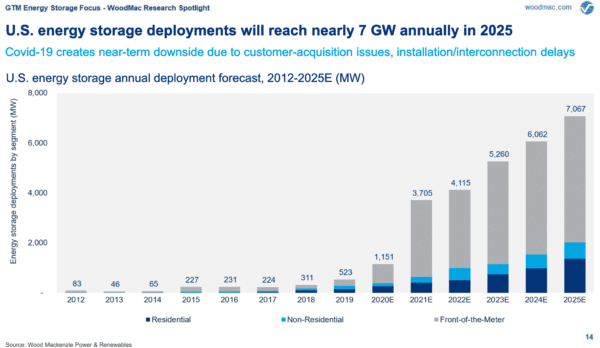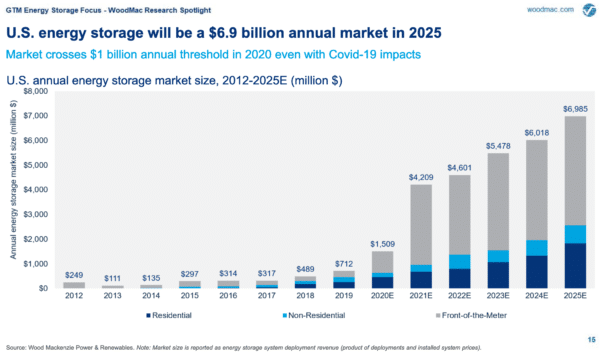GTM held a virtual event with an energy storage focus, hosted by Daniel Finn-Foley, head of energy storage at Wood Mackenzie. Here’s a link to the event — and here are a few slides and some commentary from the event.
Finn-Foley gave a “crash course on the U.S. energy storage market” and spoke of how this “nascent market” is evolving.
He said, “Residential storage is still a California story due to the SGIP [incentive] and resiliency concerns.” The head analyst said there was a “boom” in Texas “with a lot of one-hour systems coming on line.”
168 MW/288 MWh of storage deployed in Q2
According to the analyst’s most recent data, 168 MW/288 MWh of electrochemical storage was deployed in Q2.




Finn-Foley spoke of “the potential of energy storage to redefine the market,” and its ability to work with natural gas.
He noted that barriers to energy storage such as eligibility were starting to fall — with regulations like FERC Order 841 giving energy storage access to wholesale markets and storage starting to get “a fair shake in planning models.”
Finn-Foley suggested we were entering the “necessity phase” where commitments for 100% renewables was pulling energy storage into the electrical grid. He cited a “wealth of markets” such as ancillary services, shifting solar and improving capacity.
Seismic shift
Finn-Foley said there was “a seismic shift” happening in the energy storage market. According to the analyst’s IRP tracker, “We see utilities that are deploying energy storage at massive scale over the next 15 years — and this has happened relatively rapidly.”
That seismic shift can be seen in the massive increase of energy storage in utility integrated resource planning. The energy storage in Dominion Energy’s IRP increased by a factor of eight from 2019 to 2020. Arizona Public Service’s 2017 plan called for 503 MW of energy storage — it now has plans for 5 GW. Tuscon Electric is planning for 1.5 GW of storage capacity — an order of magnitude increase.
The IRP changes are evidence that “utilities are starting to recognize” the holistic value of energy storage, said Finn-Foley.

This content is protected by copyright and may not be reused. If you want to cooperate with us and would like to reuse some of our content, please contact: editors@pv-magazine.com.








Wow – I didn’t know the battery storage capacity was advancing that quickly! This trend is so cool to see!